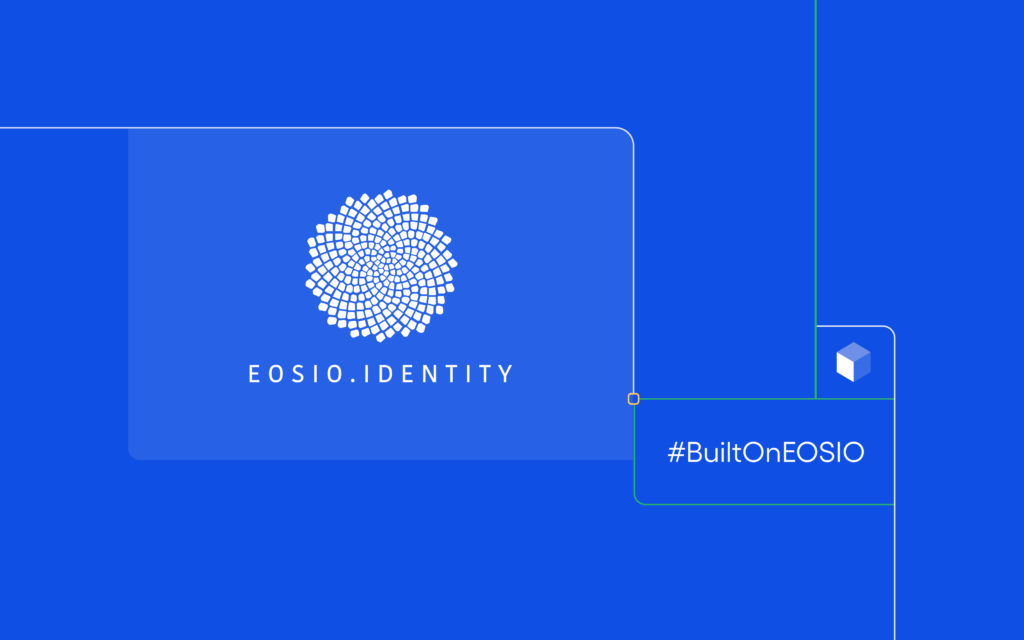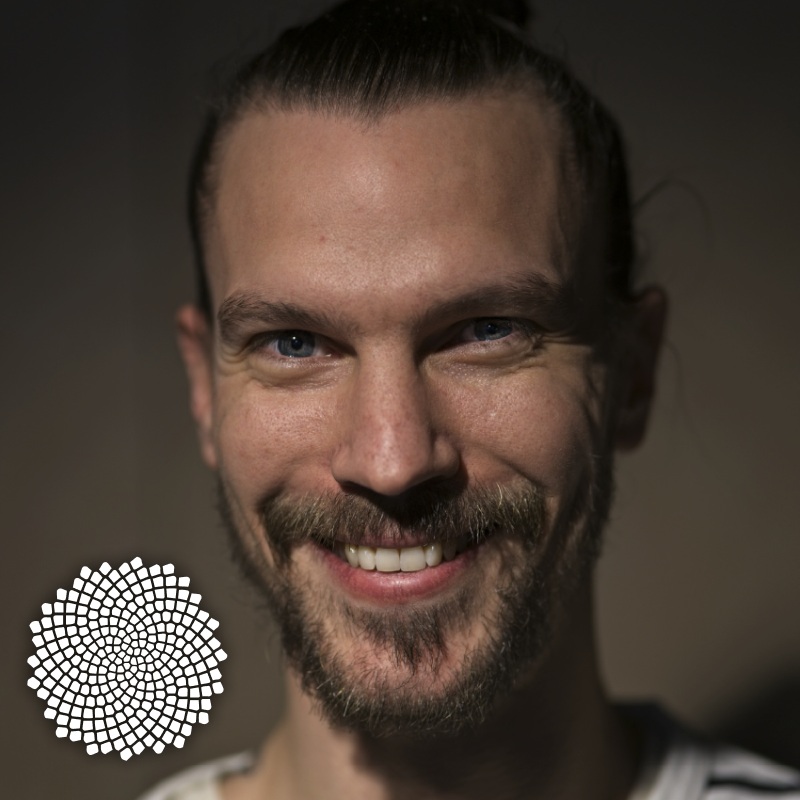
译文/Translated:
区块链和去中心化身份公司Gimly主要业务在自主身份(SSI)和安全数据交换,它搭建了EOSIO.ID框架,这个EOSIO框架旨在粗肌SSI,减少和凭证证明相关的模糊性和数据处理问题。
现在的身份系统非常依赖中心化的系统管理账户权限。比如,虽然用Google账户登录任何一个相关网站非常方便,但是包含了个人身份信息的数据到底会被怎么使用却不得而知。尽管Google可能在18个月之后就删除了个人用户信息,但是这之前这个公司就持有了用户访问过的网站、去过的地方、买过的东西等信息。
科技在社会上的作用越来越强大,但是用户越来越依赖的设备现在也有可能凭借全方位窥探消费者的日常生活给自己带来利润。SSI框架让用户可以保护自己信息,这样他们就可以选择什么时候、对谁开放信息权限。
我们也为在SSI框架上构建的用户准备了启动去中心化身份(DID))的指南。DID 核心是一套由去中心化身份基金会发布的DID和可验证凭证(VC)规范。Gimly的创始人Caspar Roelofs认为,用SSI的最终目的是实现SSI解决方法和提供者之间完全的互操作性。“DID核心可以被认为是标准的标准,它可以保证哪怕在不同的区块链用了不同的DID或可验证凭证,SSI解决方案都能协作。符合这样的标准之后,我们希望EOSIO.ID不单单能在EOSIO生态任何链上使用,甚至在EOSIO生态之外的其它地方也能实现互操作性。比如,利用EOSIO.ID的应用可以在WAX、EOS公链、以太坊或Hyperledger Indy上都兼容可验证凭证和DID。
Gimly涉及的EOSIO.ID符合DID核心标准,它构建的这个协议还让用户对自己的个人验证数据有了一定控制,同时还和现在的身份验证公式一样简单、便携。
去中心化的身份验证模式
DID框架利用标准方法处理数字身份,让它在去中心化注册表上运行。
通过加密密钥对连接的时候,SSI系统往往会利用手机的生物识别技术安全实现该连接,这时候它就可以取代中心化的身份管理系统。EOSIO.ID不会在身份数据上增加中心化实体命令,而是引入自主凭证组件,让个人用户都能获得控制权和方便性。
EOSIO.IO简化了数据处理过程。对于把数据交给用户管理的平台来说,这就意味着在数据合规的范畴内,它们会遇到的繁文缛节就少了,因为需要符合监管标准的个人信息不会在他们的系统上进行。这也意味着它们比较不容易碰到攻击向量,因为用户处理自己ID的验证数据时有选择性。
Caspar说这就是SSI可以成为Web3时代的主要模块的理由。“企业想要减少责任和合规成本,而用户想重新获得对自己资源的控制,SSI融合了这两个需求。用户能够完全控制谁获得了哪个数据。”
社区为导向的做法
创造EOSIO.ID的过程也包括了大量社区力量。“起草这些新规范的时候,我们就希望保证获得EOSIO社区的参与和支持。我们成立了EOSIO身份工作小组,”Caspar说。“Jack Tanner担任技术总监领导工作,我们邀请社区成员加入,最终展开了工作。OmniOne, EuropeChain, EOS Nation, EOS Costa Rica等各方都参与了流程。”
在构建EOSIO.ID的时候,Gimly参加了去中心化身份基金会和W3C凭证社区小组(W3C-CCG),最终他开发了“可验证状态”的标准。这样,EOSIO系统上各种类型的主要结构权限都可以用标准、合规的方式被表达出来,从而保证在更大的SSI系统中的互操作性。
Gimly构建的“可验证状态”是一个一般目的的公开标准,在任何关注复杂的账户管理和密钥管理结构的区块链上都可以使用。他不单单兼容EOSIO账户结构,它还可以在Hyperledger Indy, Ripple, 和 BigchainDB上使用。EOSIO.ID代表了可验证状态第一次被用来表达EOSIO独特的账户权限结构。
Caspar Roelofs 生平

Caspar是GImly Blockchain Projects的创始人,他是一个产品开发师,在区块链技术和SSI上有丰富的经验。他大学专业是科学和技术,在科技和创新咨询上有经验。
这样的背景下,Caspar对通过网络、合作和生态实现互操作性和创新产生了兴趣。Caspar和Gimly现在是欧洲自主身份框架(eSSlf)生态、去中心化身份基金会、W3C凭证社区小组(W3C-CCG)的一员。
你正在EOSIO之上创新吗?
我们的 #建立在EOSIO 系列展示了利用EOSIO科技的一些卓越的项目,它们都能为我们更加安全和联系的世界添砖加瓦。如果您想给我们下一个阶段的项目提建议,请给我们的开发者关系小组发送邮件spotlight@block.one
了解EOS VC如何通过战略性投资和风投合伴基金支持EOSIO生态,请访问 vc.eos.io
–Block.one开发者关系小组
重要通知:所有提供的材料都受此重要通知的约束,您必须自行熟悉此间条款。该通知包含与我们软件、出版物、商标、第三方资源以及前瞻性声明相关的信息、限制和约束内容。通过访问我们的材料,您接受并同意此通知的条款。
原文/Original:
Gimly, a blockchain and decentralized identity company focusing on self-sovereign identity (SSI) and secure data exchange, built EOSIO.ID, an EOSIO framework for SSI that reduces the obscurity and data processing related to proof of credentials.
Today’s identification systems are heavily dependent on centralized systems that manage account permissions. For example, using a Google account to login to any number of connected websites provides greater accessibility, however it comes at the cost of general obscurity regarding how data containing personal identifiers is used. While Google may delete private user data after 18 months, before that happens the company harvests information about sites users visit, places they go, what they buy, and more.
As technology plays a more pivotal role in society, the same devices users have come to rely on now harbor the potential to provide corporate interests a pervasive window into the day to day lives of consumers. SSI frameworks allow users to shield that information, so they can selectively choose when, and by whom, it can be accessed.
For those that wish to build on SSI frameworks, there are guidelines for implementing Decentralized Identifiers (DIDs) that serve as the foundation for the protocol. DID Core is a set of specifications for DIDs and Verifiable Credentials (VCs) created by the Decentralized Identity Foundation. Founder of Gimly, Caspar Roelofs explains that with SSI, the ultimate goal is to achieve complete interoperability between any SSI solutions and providers. “DID core can be considered a standard for standards, ensuring that SSI solutions can work together even if they use different DIDs or verifiable credentials on different blockchains. By conforming to these standards we aimed to build EOSIO.ID in a way that it not only can be implemented with any EOSIO chain but that it will even be interoperable outside the EOSIO ecosystem. An EOSIO.ID based application should work with verifiable credentials and DIDs on WAX just as easily as the EOS Public Blockchain as well as Ethereum or Hyperledger Indy.”
Gimly designed EOSIO.ID to adhere to the DID core standard, and built a protocol to provide users a level of control over their personal identification data, while affording the same accessibility and portability present in today’s ID verification protocols.
A Decentralized Approach To Identification
The DID framework utilizes a standards-based approach to digital identity that works on top of decentralized registries.
When connected via cryptographic key-pair, often managed securely by biometric identification on a mobile device, an SSI based system offers a secure and modern alternative to central identity management systems. Rather than giving a centralized entity command over identification data, EOSIO.ID introduces a self-sovereign component to credentials that imparts both control and convenience to individual users.
EOSIO.ID minimizes data processing. For platforms that turn over data to users to manage, this means less red tape related to data compliance, as this personal information that may be subject to regulatory standards won’t be processed on their systems. It also means less exposure to potential attack vectors as users selectively process their ID verification data.
Caspar believes that this is why SSI will be such a central building block in Web3, both in the crypto industry and in enterprise spaces. “It converges the need for enterprises to minimize liability and compliance costs with the need of users to regain control over their data. The user is able to fully control who gains access to which data”.
A Community Driven Approach
Gimly’s journey to build EOSIO.ID also encompassed a good deal of community effort. “We wanted to ensure engagement and support from the EOSIO community when drafting these new specifications. We set up the EOSIO identity working group,” explains Caspar. “With our tech lead Jack Tanner leading the work, we opened up the process by inviting community members to join. We had OmniOne join, EuropeChain, EOS Nation, EOS Costa Rica and many other players joined in the process.”
To build EOSIO.ID, Gimly participated as a member of the Decentralized Identity Foundation and the W3C credentials community group (W3C-CCG), ultimately working to develop a new specification called Verifiable Conditions. This will be the final building block to allow the types of key structure permissions present on EOSIO-based systems to be expressed in a standard compliant way, and thereby ensure interoperability within the broader SSI ecosystem.
Gimly built Verifiable Conditions as a general purpose open standard, to be used by any blockchain featuring complex account management and key management structures. In addition to being compatible with EOSIO-based account structures it also works with Hyperledger Indy, Ripple, and BigchainDB. EOSIO.ID represents the first implementation of Verifiable Conditions to express EOSIO’s unique account permission structure.
Meet Caspar Roelofs

Caspar is the founder of Gimly Blockchain Projects, and is a product developer with expertise in blockchain technology and SSI. He has an academic background in science and technology studies, and experience in technology and innovation consulting.
From this background, Caspar found an interest in interoperability and innovation through building networks, partnerships and ecosystems. With Gimly, Caspar is a member of the European self-sovereign identity framework (eSSIf) ecosystem, the Decentralized Identity Foundation (DIF), and the W3C credentials community group (W3C-CCG).
Are You Building on EOSIO?
Our #BuiltOnEOSIO series showcases some of the amazing projects leveraging EOSIO technology to build a more secure and connected world. If you would like to suggest a project for us to feature please send an email to spotlight@block.one for our Developer Relations team to review.
For more information on how EOS VC supports the EOSIO ecosystem through strategic investments and venture capital partnership funds, visit vc.eos.io.
– Block.one Developer Relations team
Important: All material is provided subject to this important notice and you must familiarize yourself with its terms. The notice contains important information, limitations and restrictions, relating to our software, publications, trademarks, third-party resources and forward-looking statements. By accessing any of our material, you accept and agree to the terms of the notice.
原文链接/Original URL: